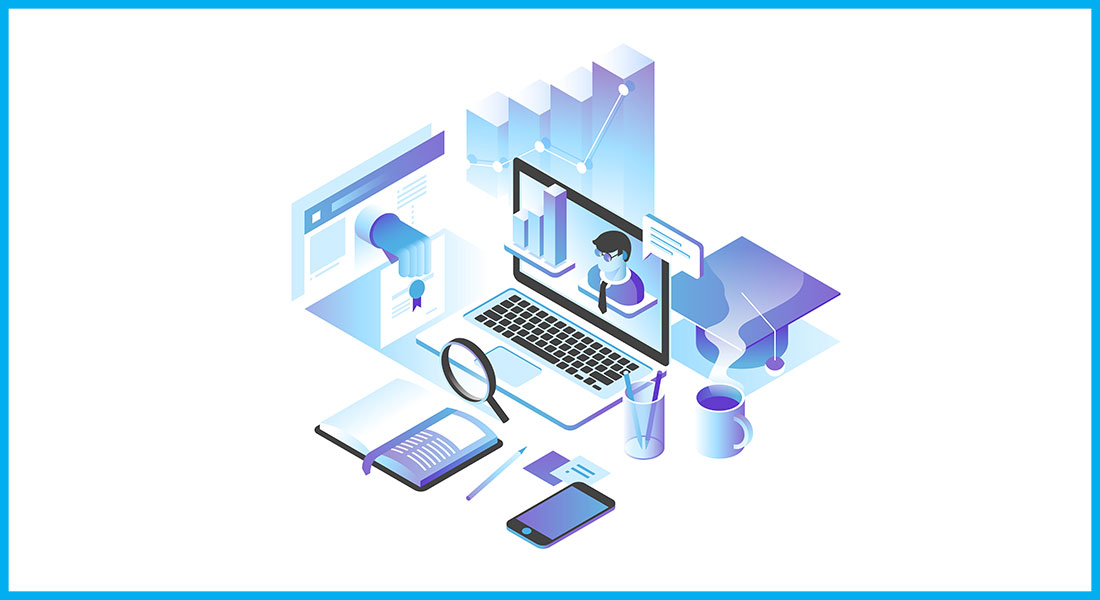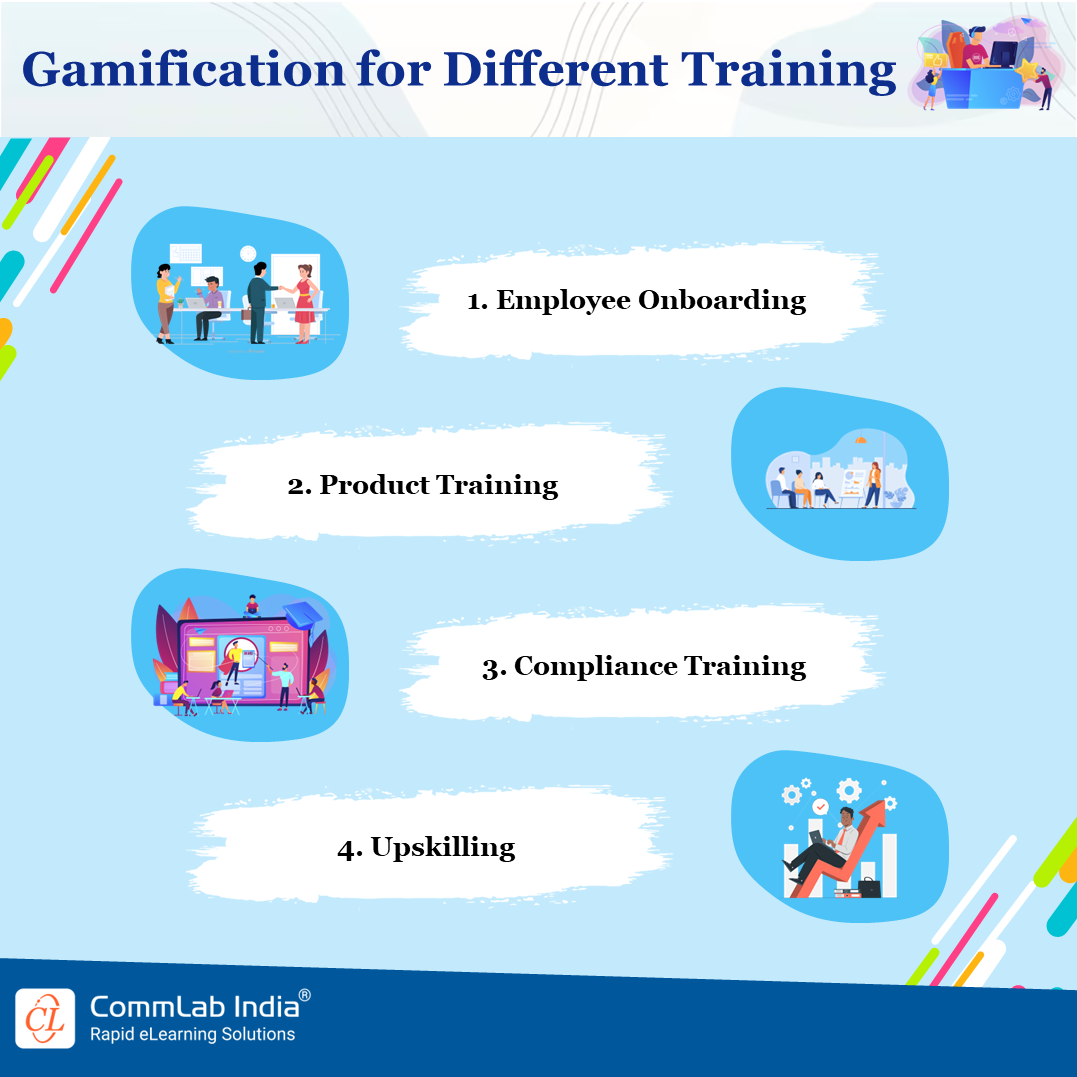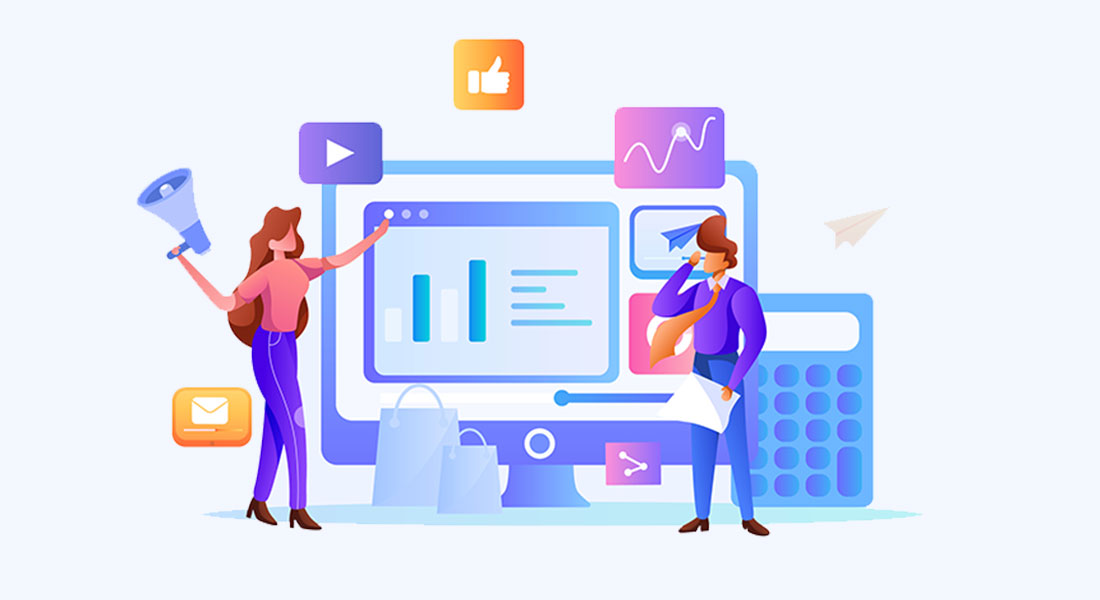10 Types of Microlearning Templates for Supercharging Rapid eLearning Courses

In today's fast-paced world, where information is constantly bombarding us from all directions, the traditional approach to employee training and development is undergoing a significant transformation. To keep up with the demand for quick, effective corporate training solutions, rapid eLearning development has emerged as a powerful tool for creating microlearning content. The synergy between rapid eLearning for corporate training and microlearning is undeniable.
→ Download Now: Interactive Templates for New-Age eLearning
Table Of Content
- What are Key Strategies for Optimizing Rapid eLearning for Microlearning?
- 10 Types of Microlearning Templates for Supercharging Rapid eLearning Courses
- How to Implement the Rapid eLearning and Microlearning Duo for Corporate Training?
- What is the Future of Rapid eLearning and Microlearning?
Rapid eLearning development emphasizes speed and efficiency, enabling organizations to develop and deploy training materials in a fraction of the time compared to traditional methods. By leveraging existing resources, templates, and authoring tools, rapid eLearning development makes it possible to create high-quality microlearning experiences without compromising on effectiveness. Rapid eLearning's focus on agility and efficiency aligns perfectly with microlearning's need for concise, targeted content. By combining these two approaches, organizations can unlock a wealth of benefits, including increased learner engagement, improved knowledge retention, and faster time to competency.
Watch this video to unveil how rapid eLearning creates memorable learning experiences!
What are Key Strategies for Optimizing Rapid eLearning for Microlearning?
Creating effective microlearning experiences requires a strategic approach that goes beyond simply breaking down content into smaller pieces. It's about designing learning modules that are concise, engaging, and impactful, catering to the specific needs of the modern learner while leveraging the right microlearning tools.
In this section, we'll dive into some key strategies for optimizing rapid eLearning development for microlearning success.
1. Chunking eLearning content effectively: Creating bite-sized learning modules
The cornerstone of microlearning is the effective chunking of content. This involves breaking down complex topics into smaller, more manageable units that can be consumed in short bursts. Each chunk should focus on a single learning objective, providing learners with a clear and focused learning experience.
When chunking content, it's essential to consider the cognitive load of learners. Avoid overwhelming them with too much information at once. Instead, present information in a logical and sequential manner, using clear headings, bullet points, and visuals to aid comprehension.
2. Designing for mobile-first: Ensuring accessibility and engagement on various devices
In today's digital age, learners access content on a variety of devices, including smartphones, tablets, and laptops. It's crucial to design microlearning modules with a mobile-first approach, ensuring that they are accessible and engaging on all screen sizes.
This involves using responsive eLearning design principles to adapt content layout and formatting based on the device being used. It also means optimizing visuals and multimedia elements for smaller screens, ensuring that they load quickly and don't hinder the mobile learning experience.

3. Incorporating interactive elements: Quizzes, polls, simulations, and gamification
Interactive elements play a vital role in enhancing learner engagement and knowledge retention. Incorporating quizzes, polls, simulations, and gamification elements into microlearning modules can transform passive learning into an active and immersive experience.
Interactive elements provide opportunities for learners to test their understanding, apply knowledge in real-world scenarios, and receive immediate feedback. This not only reinforces learning but also makes the process more enjoyable and motivating.
Watch this video to discover the crucial components of interactive eLearning!
4. Using visuals and multimedia: Enhancing engagement and retention
Visuals and multimedia elements, such as images, videos, and animations, can significantly enhance the learning experience. They break up text-heavy content, making it more visually appealing and easier to digest. Visuals also aid in comprehension, particularly for complex concepts or processes.
When using visuals and microlearning videos, it's essential to ensure that they are relevant, high-quality, and aligned with the learning objectives. Avoid using visuals purely for decorative purposes. Instead, use them strategically to illustrate key points, provide examples, or summarize information.

5. Personalizing the learning experience: Adapting to individual needs and preferences
75% of companies plan to create custom learning programs, with microlearning offering a tailored solution.
Source: The Learning Guild
Personalization is a powerful tool for maximizing the effectiveness of microlearning. By tailoring content and delivery to individual needs and preferences, organizations can create more engaging and relevant learning experiences.
Personalization can be achieved through various means, such as adaptive learning pathways, personalized recommendations, and targeted feedback. This approach recognizes that learners have different learning styles, paces, and prior knowledge, and adapts the learning experience accordingly.
By implementing these key strategies, organizations can optimize rapid custom eLearning for microlearning success. Creating bite-sized learning modules, designing for mobile-first, incorporating interactive elements, using visuals, and personalizing the learning experience will not only enhance learner engagement and knowledge retention but also empower learners to acquire new skills and knowledge quickly and efficiently in today's fast-paced world.
10 Types of Microlearning Templates for Supercharging Rapid eLearning Courses
What are Microlearning Templates?
First things first, let’s talk about what microlearning templates are. Simply put, they are pre-designed layouts and structures that you can use as a starting point for your rapid eLearning courses. They come in a variety of shapes and sizes and can be customized to fit your specific needs and preferences. Think of them as the Lego blocks of eLearning – you can use them to build something new and unique, but you don’t have to start from scratch.
Now, why would you want to use microlearning templates? Well, for one thing, they can save you a ton of time and effort. Instead of having to design every aspect of your course from scratch, you can start with a template that already has a lot of the groundwork done for you. This means you can focus more on the content and delivery of your course, rather than the technical details of the design.
Wish to Accelerate Rapid eLearning Design and Development Processes? Try Microlearning Templates!
Here are a few popular ones to get started with –
- Assessment templates
- Gamification templates
- Storyboard templates
- Infographic templates
Read on to explore more such templates and understand their use cases.
But enough chit-chat, let’s get to the good stuff – the types of ready-to-use templates you can use! Here are 10 popular ones –
1. Course Outline Templates
This template is a great starting point for planning out the structure of your rapid eLearning course. It typically includes sections for the course title, description, learning objectives, and module breakdown. By using a course outline template, you can easily organize your content and ensure that your course is well-structured and easy to follow. It can also help you identify any gaps in your content and make sure that all the necessary information is included.
2. Assessment Templates
An assessment template is a pre-designed layout that you can use for quizzes, tests, and other forms of evaluation. These templates typically include sections for questions, answer choices, and feedback. By using an assessment template, you can save time and effort while ensuring that your quizzes and tests are consistent and well-designed. You can also customize the template to fit your specific needs, such as adding images or videos to the questions.
Here’s an insightful video that will help you understand various amazing strategies to design interactive and engaging eLearning assessments.
3. Interactive Scenario Templates
This template is designed to help you create engaging scenarios that allow learners to practice real-life situations. It typically includes a storyline, characters, and multiple decision points. By using an interactive scenario template, you can create immersive learning experiences that help learners apply their knowledge in practical situations. You can also track learner progress and adjust the scenario based on their performance.
4. Video Tutorial Templates
A video tutorial template is a pre-designed layout that you can use to create engaging and informative video tutorials. These templates typically include sections for an introduction, step-by-step instructions, and a conclusion. By using a video tutorial template, you can create high-quality video-based learning that guide learners through complex concepts or processes. You can also customize the template to fit your branding and design preferences.
5. Learning Game Templates
A learning game template is designed to help you create interactive games that reinforce learning objectives. These templates typically include sections for game mechanics, instructions, and feedback. By using a learning game template, you can create a fun and engaging learning experience that motivates learners to apply their knowledge in a game-like setting. You can also customize the template to fit your specific needs and preferences, such as adding new game elements or adjusting the difficulty level.

6. Gamification Templates
This template is designed to help you add gamification elements to your eLearning course, such as points, badges, and leaderboards. It typically includes sections for rules, rewards, and progress tracking. By using a gamification template, you can create a fun and engaging learning experience that motivates learners to complete the course and achieve their goals. You can also customize the template to fit your specific needs and preferences.

7. Storyboard Templates
A storyboard template is a pre-designed layout that you can use to plan and organize the content and visuals of your rapid eLearning course. These templates typically include sections for each slide or module, along with placeholders for images, text, and multimedia. By using a storyboard template, you can ensure that your course is well-structured and visually appealing. You can also collaborate with others and make changes easily before moving on to the development stage.
8. Infographic Templates
An infographic template is a pre-designed layout that you can use to create visually appealing and informative infographics. These templates typically include sections for data visualization, icons, and text. By using an infographic template, you can communicate complex information in a clear and concise way. You can also customize the template to fit your branding and design preferences. For instance, most social media templates are a type of infographic template and you can use platforms like Canva to find numerous creative and customizable templates.
9. Interactive Timeline Templates
A timeline template is a pre-designed layout that you can use to create interactive timelines that showcase important events and dates. These templates typically include sections for each event, along with images and descriptions. By using an interactive timeline template, you can create an engaging and informative visual that helps learners understand the sequence of events and their significance. Here are a few platforms where you can find various types of microlearning templates
10. Audio Narration Templates
An audio narration template is a pre-designed layout that you can use to create audio narrations that complement your visuals. These templates typically include sections for each slide or module, along with instructions for recording the audio. By using an audio narration template, you can add a personal touch to your course and help learners better understand the content. You can also customize the template to fit your specific needs, such as adding background music or adjusting the volume.
How to Implement the Rapid eLearning and Microlearning Duo for Corporate Training?
Implementing custom eLearning and microlearning in corporate training requires careful planning and execution. To implement microlearning in the workplace effectively, organizations should:
1. Identify the training needs of their employees
2. Design interactive training content
3. Use a Learning Management System (LMS) to deliver and track training
4. Keep it short and focused
5. Use multimedia elements
6. Personalize the learning experience
7. Make it accessible
8. Continuously evaluate and update custom eLearning content
What is the Future of Rapid eLearning and Microlearning?
The world of learning and development is constantly evolving, driven by technological advancements and changing learner expectations. As we look ahead, the future of rapid eLearning and microlearning holds immense potential for innovation and transformation. In this section, we'll explore some emerging trends and technologies that are shaping the future of these two interconnected fields.
1. Emerging trends and technologies: AI, VR, AR, and personalization
Artificial Intelligence (AI) is poised to play a pivotal role in the future of rapid eLearning and microlearning. AI-powered tools can automate various aspects of the development process, such as content creation, personalization, and assessment. This will enable organizations to create more engaging and effective microlearning experiences at scale.
Virtual Reality (VR) and Augmented Reality (AR) offer immersive learning environments that can simulate real-world scenarios and provide hands-on experiences. These technologies can be particularly valuable for training in complex or hazardous environments, allowing learners to practice skills and make decisions in a safe and controlled setting.
Personalization is another key trend that will continue to gain momentum. By leveraging learner data and AI algorithms, microlearning platforms can deliver tailored content and recommendations, catering to individual learning styles, preferences, and needs. This will lead to more engaging and effective learning experiences, maximizing knowledge retention and application.
2. The evolving role of instructional designers and eLearning developers
As technology continues to advance, the role of instructional designers and eLearning developers will also evolve. They will need to adapt to new rapid eLearning development tools and technologies, embrace data-driven approaches, and focus on creating learner-centric experiences.
Instructional designers will play a crucial role in curating content, designing learning pathways, and incorporating interactive elements that foster engagement and knowledge retention. eLearning developers will need to master new rapid eLearning authoring tools and technologies to create immersive and interactive microlearning experiences.

3. Predictions for the future of microlearning
The future of microlearning is bright. As organizations recognize the benefits of microlearning, we can expect to see a surge in the adoption of microlearning across various industries and sectors.
Here are some predictions for the future of microlearning:
- Microlearning will become the dominant mode of learning: With its flexibility, accessibility, and effectiveness, microlearning will become the preferred method for delivering training and development in the workplace.
- AI and personalization will drive innovation: AI-powered tools and personalization algorithms will enable the creation of highly engaging and effective microlearning experiences that cater to individual learner needs.
- VR and AR will create immersive learning environments: VR and AR technologies will offer new opportunities for creating realistic and interactive simulations, enhancing the learning experience, and improving knowledge retention.
- Microlearning will be integrated into the flow of work: Microlearning will be seamlessly integrated into daily workflows, providing learners with just-in-time support and enabling them to apply new skills and knowledge immediately.
Parting Thoughts!
In conclusion, using microlearning templates can be a great way to accelerate rapid eLearning development of your custom eLearning course. Whether you need to create a course outline, assessment, video tutorial, gamification element, or any other aspect of your custom eLearning course, there’s likely a template available that can save you time and effort. By using these templates, you can focus on creating high-quality content and ensuring that your eLearning course meets your learners’ needs and goals. So why not give it a try and see how these templates can help you with rapid eLearning for corporate training!
When it comes to finding the best templates, various rapid eLearning authoring tools have a huge repository of templates or else you can explore numerous external platforms for the same. If you wish to get started with some premium templates, you can download these for free now, go check them out!







